hollywood
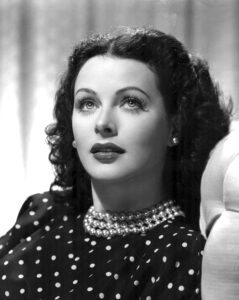 Hedy Lamarr was often called “the most beautiful woman in the world.” In September of 1940, she was a 26-yr-old actress was thriving in Hollywood, starring in such films as Tortilla Flat, Lady of the Tropics, Boom Town, and Samson and Delilah, with actors like Clark Gable and Spencer Tracey. Lamarr was a Jewish immigrant from Nazi-occupied Austria. She had been making America her home since 1938, and enjoying her new-found freedom and safety, when the world…or at least the Nazi part of the world came crashing down on her. Lamar was still living in safety, but she heard about an op in which Nazi U-boats hunted down and sank a cruise ship trying to evacuate 90 British schoolchildren to Canada. The sinking took the lives of 77 children who drowned in the bleak north Atlantic. Lamar was outraged and vowed to fight back.
Hedy Lamarr was often called “the most beautiful woman in the world.” In September of 1940, she was a 26-yr-old actress was thriving in Hollywood, starring in such films as Tortilla Flat, Lady of the Tropics, Boom Town, and Samson and Delilah, with actors like Clark Gable and Spencer Tracey. Lamarr was a Jewish immigrant from Nazi-occupied Austria. She had been making America her home since 1938, and enjoying her new-found freedom and safety, when the world…or at least the Nazi part of the world came crashing down on her. Lamar was still living in safety, but she heard about an op in which Nazi U-boats hunted down and sank a cruise ship trying to evacuate 90 British schoolchildren to Canada. The sinking took the lives of 77 children who drowned in the bleak north Atlantic. Lamar was outraged and vowed to fight back.
Lamar was more than just a pretty face. She was a talented engineer and had the 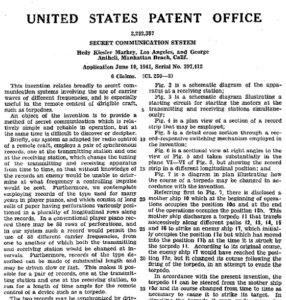 skills necessary to develop a sonar sub-locator which was used in the Atlantic for the benefit of the Allies. The principles of her work are now incorporated into modern Wi-Fi, CDMA, and Bluetooth technology, and this work led to her to be inducted into the National Inventors Hall of Fame in 2014. Lamarr was born Hedwig Eva Maria Kiesler in 1914 in Vienna, the only child of Gertrud “Trude” Kiesler née Lichtwitz and Emil Kiesler. As a child, Lamarr was interested in acting and was fascinated by theatre and film. She also won a beauty contest in Vienna, when she was 12. Her father wanted her dreams to come true, but he wisely wanted her to know more. They began to take long walks during which he would explain how technology worked.
skills necessary to develop a sonar sub-locator which was used in the Atlantic for the benefit of the Allies. The principles of her work are now incorporated into modern Wi-Fi, CDMA, and Bluetooth technology, and this work led to her to be inducted into the National Inventors Hall of Fame in 2014. Lamarr was born Hedwig Eva Maria Kiesler in 1914 in Vienna, the only child of Gertrud “Trude” Kiesler née Lichtwitz and Emil Kiesler. As a child, Lamarr was interested in acting and was fascinated by theatre and film. She also won a beauty contest in Vienna, when she was 12. Her father wanted her dreams to come true, but he wisely wanted her to know more. They began to take long walks during which he would explain how technology worked.
On August 10, 1933, Lamarr married a rich admirer named Friedrich Mandl at the Karlskirche. She was 18 years old, and he was 33. As marriages go, this  was her biggest mistake. Mandl was controlling and made her quit acting. He controlled her life is many other ways too, but while she felt like a virtual prisoner in their castle, he did take her on business trips where he conferred with scientists and other professionals involved in military technology. The meetings became her introduction to the field of applied science and nurtured her latent talent in science. Mandl had close social and business ties to the Italian government, selling munitions to the country, and although like Hedy, his own father was Jewish, had ties to the Nazi regime of Germany, as well. Lamarr was no longer able to tolerate her husband’s controlling ways and eventually made her escape from her unbearable marriage to Mandl. By 1938, she had made her way to the United States, and it was there that she was able to pursue both her acting career and what would become her contribution to the world…the sonar locater. Lamarr died Casselberry, Florida of heart disease on January 19, 2000, at the age of 85. Her son Anthony Loder spread her ashes in Austria’s Vienna Woods in accordance with her last wishes.
was her biggest mistake. Mandl was controlling and made her quit acting. He controlled her life is many other ways too, but while she felt like a virtual prisoner in their castle, he did take her on business trips where he conferred with scientists and other professionals involved in military technology. The meetings became her introduction to the field of applied science and nurtured her latent talent in science. Mandl had close social and business ties to the Italian government, selling munitions to the country, and although like Hedy, his own father was Jewish, had ties to the Nazi regime of Germany, as well. Lamarr was no longer able to tolerate her husband’s controlling ways and eventually made her escape from her unbearable marriage to Mandl. By 1938, she had made her way to the United States, and it was there that she was able to pursue both her acting career and what would become her contribution to the world…the sonar locater. Lamarr died Casselberry, Florida of heart disease on January 19, 2000, at the age of 85. Her son Anthony Loder spread her ashes in Austria’s Vienna Woods in accordance with her last wishes.
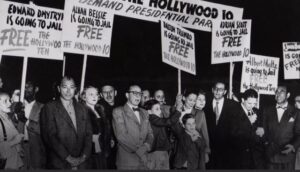 In a very different time in America, being a communist was not accepted, and it really shouldn’t be accepted now, but that is not the opinion of every person in the United States today. Nevertheless, on October 20, 1947, saw the beginning of the notorious Red Scare. At that time, a Congressional committee began investigating the Communist influence that was, or at least was suspected of infiltrating one of the world’s richest and most glamorous communities…Hollywood, California.
In a very different time in America, being a communist was not accepted, and it really shouldn’t be accepted now, but that is not the opinion of every person in the United States today. Nevertheless, on October 20, 1947, saw the beginning of the notorious Red Scare. At that time, a Congressional committee began investigating the Communist influence that was, or at least was suspected of infiltrating one of the world’s richest and most glamorous communities…Hollywood, California.
One of the greatest fears after World War II, was that the Cold War began to heat up between the United States and the communist-controlled Soviet Union. Conservatives in Washington were working hard to remove any communists in government. Then, they set their sights on those people who were alleged “Reds” in the liberal movie industry. During the investigation that began in October 1947, the House Un-American Activities Committee (HUAC) questioned a number of prominent people. During the interviews, the committee asked point-blank, “Are you or have you ever been a member of the Communist Party?”
It might have been fear or maybe a sense of patriotism, but some witnesses, including director Elia Kazan, 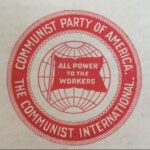 actors Gary Cooper and Robert Taylor, and studio honchos Walt Disney and Jack Warner, all gave the committee names of colleagues they had suspected of being communists. That began a more grueling interrogation of a small group known as the “Hollywood Ten.” All of the “Hollywood Ten” resisted the accusations, complaining that the hearings were illegal and violated their First Amendment rights. The 10 were Alvah Bessie, Herbert Biberman, Lester Cole, Edward Dmytryk, Ring Lardner Jr, John Howard Lawson, Albert Maltz, Samuel Ornitz, Adrian Scott, and Dalton Trumbo. While they weren’t convicted of being communist, they were all convicted of obstructing the investigation and each served jail terms.
actors Gary Cooper and Robert Taylor, and studio honchos Walt Disney and Jack Warner, all gave the committee names of colleagues they had suspected of being communists. That began a more grueling interrogation of a small group known as the “Hollywood Ten.” All of the “Hollywood Ten” resisted the accusations, complaining that the hearings were illegal and violated their First Amendment rights. The 10 were Alvah Bessie, Herbert Biberman, Lester Cole, Edward Dmytryk, Ring Lardner Jr, John Howard Lawson, Albert Maltz, Samuel Ornitz, Adrian Scott, and Dalton Trumbo. While they weren’t convicted of being communist, they were all convicted of obstructing the investigation and each served jail terms.
The Hollywood establishment, after being pressured by Congress, started a blacklist policy. The blacklist involved the practice of denying employment to entertainment industry professionals believed to be or to have been Communists or sympathizers. Actors, screenwriters, directors, musicians, and other American entertainment professionals were barred from work by the studios. This was usually done on the basis of their membership in, or alleged membership in, or sympathy with the Communist Party USA, or their refusal to assist Congressional investigations into party activities. The policy brought about the banning the work of about 325 screenwriters, actors, and directors who had not been cleared by the committee.
 Those blacklisted included composer Aaron Copland, writers Dashiell Hammett, Lillian Hellman, and Dorothy Parker, playwright Arthur Miller, and actor and filmmaker Orson Welles. The policy wasn’t always strictly enforced, and even during the period of its strictest enforcement, from the late 1940s through to the late 1950s. The blacklist was almost never made explicit. It was rather the result of numerous individual decisions by the studios and was not the result of official legal action. Nevertheless, the blacklist quickly and directly damaged or even ended the careers and income of scores of individuals working in the film industry.
Those blacklisted included composer Aaron Copland, writers Dashiell Hammett, Lillian Hellman, and Dorothy Parker, playwright Arthur Miller, and actor and filmmaker Orson Welles. The policy wasn’t always strictly enforced, and even during the period of its strictest enforcement, from the late 1940s through to the late 1950s. The blacklist was almost never made explicit. It was rather the result of numerous individual decisions by the studios and was not the result of official legal action. Nevertheless, the blacklist quickly and directly damaged or even ended the careers and income of scores of individuals working in the film industry.
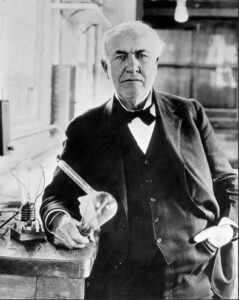
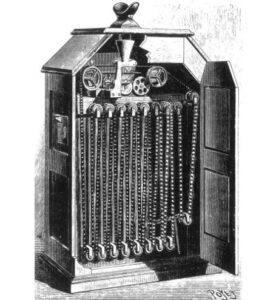 We all think of California, when we think of Hollywood. Of course, these days we also think of politics, and we wish we didn’t have to associate one with the other, because it has ruined the whole theme of Hollywood. Be that as it may, there was a time when Hollywood wasn’t in California. It was in New York. So, what happened?
We all think of California, when we think of Hollywood. Of course, these days we also think of politics, and we wish we didn’t have to associate one with the other, because it has ruined the whole theme of Hollywood. Be that as it may, there was a time when Hollywood wasn’t in California. It was in New York. So, what happened?
The film industry started in 1878, when Eadweard Muybridge first demonstrated the power of photography to capture motion. It was an amazing new concept, and it started the ball rolling to what would become modern-day films. In 1894, the world’s first commercial motion-picture exhibition was given in New York City. This wouldn’t have been possible without Thomas Edison’s kinetoscope. The kinetoscope is an early motion-picture device in which the images were viewed through a peephole. While Edison’s kinetoscope made film possible, it also became a big part of the problem that caused the film industry to make a major move.
Edison had patented his kinetoscope…as he should have, but in all, he had patents on over 1,000 different things. These patents included most of the technology needed to make high-end movies. The Edison Manufacturing Company’s patent lawsuits against each of its domestic competitors crippled the US film industry. The turmoil reduced production mainly to two companies…Edison and Biograph, which used a different camera design. The others had to import French and British films, which was not how anyone wanted things to go. In the end, Edison pretty much put himself out of the industry.
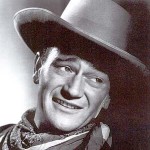
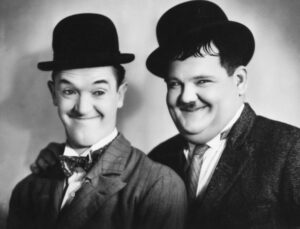 In the following decades, production of silent film greatly expanded. Studios formed and migrated to California, and films and the stories they told became much longer. The main reason for the move to California was to escape the Edison patent lawsuits, but there were other reasons too. It turned out that the milder climate made it easier to finish films, due to better weather. These days, that doesn’t matter so much. What weather patterns can’t be created, can simply be traveled to, so filming can go on year-round.
In the following decades, production of silent film greatly expanded. Studios formed and migrated to California, and films and the stories they told became much longer. The main reason for the move to California was to escape the Edison patent lawsuits, but there were other reasons too. It turned out that the milder climate made it easier to finish films, due to better weather. These days, that doesn’t matter so much. What weather patterns can’t be created, can simply be traveled to, so filming can go on year-round.
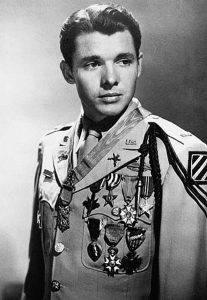 Recently, I found out that I am related to Audie Murphy, who was one of the most decorated American combat soldiers in World War II. As it turns out, he is my 7th cousin 3 times removed, on my dad’s side of the family. We share the same grandfather, Thomas Fuller, who is my 9th great grandfather, and Audie’s 7th great grandfather. Audie became an actor in 1948 and 1969, during which time he was beloved by many people, including my parents. I think they would have been very excited to find out that he was actually related to them, but then I guess they already know it by now. While his acting was impressive, it was his military career that always impressed my parents.
Recently, I found out that I am related to Audie Murphy, who was one of the most decorated American combat soldiers in World War II. As it turns out, he is my 7th cousin 3 times removed, on my dad’s side of the family. We share the same grandfather, Thomas Fuller, who is my 9th great grandfather, and Audie’s 7th great grandfather. Audie became an actor in 1948 and 1969, during which time he was beloved by many people, including my parents. I think they would have been very excited to find out that he was actually related to them, but then I guess they already know it by now. While his acting was impressive, it was his military career that always impressed my parents.
Audie Leon Murphy, was born on June 20, 1925 to Josie Bell Killian and Emmett Berry Murphy in Kingston, Texas. He was born into a large family of sharecroppers. Before long, his father abandoned them, and then his mother died when he was a teenager. Murphy left school in fifth grade to pick cotton and find other work to help support his family. He was a skilled rifleman, and hunting became a necessity for putting food on the table.
After the Japanese attacked Pearl Harbor in 1941, Murphy’s decided that he wanted to help, but he was too young. His older sister helped him to falsify documentation about his birthdate in order to meet the minimum-age requirement for enlisting in the military, because he was only 16 at the time. He was turned down by the Navy and the Marine Corps, so he enlisted in the Army. He first saw action in the 1943 Allied invasion of Sicily. Then, in 1944 he participated in the Battle of Anzio, the liberation of Rome, and the invasion of southern France. Murphy fought at Montélimar and led his men on a successful assault at the L’Omet quarry near Cleurie in northeastern France in October. He received every military combat award for valor available from the U.S. Army, as well as French and Belgian awards for heroism. Murphy received the Medal of Honor for valor that he demonstrated at the age of 19 for single-handedly holding off an entire company of German soldiers for an 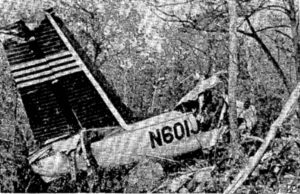 hour at the Colmar Pocket in France in January 1945, then leading a successful counterattack while wounded and out of ammunition.
hour at the Colmar Pocket in France in January 1945, then leading a successful counterattack while wounded and out of ammunition.
After his acting career ended, Murphy, like many actors without work, experienced money problems, but still, he refused offers to appear in alcohol and cigarette commercials, because he did not want to set a bad example. He never let Hollywood take away his high moral standards. Murphy died in a plane crash in Virginia in 1971, shortly before his 46th birthday. Such a sad ending to an amazing life. He was interred with full military honors at Arlington National Cemetery. His grave is one of the most visited sites in the cemetery.
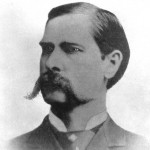 Growing up, my sisters and I watched lots of westerns. It wasn’t so strange really, because westerns were the in thing back then. Everyone loved watching them. One show I remember watching was The Gunfight at the O.K. Corral. It all seemed like it took place so long ago, and to many people I guess it was. Still, when you think of the fact that Wyatt Earp, a frontiersman, marshal and gambler, who got into a feud in Tombstone, Arizona, that led to the famous gunfight at the O.K. Corral passed away quietly in Los Angeles on January 13, 1929, it doesn’t seem so long ago anymore. I guess that in Wyatt Earp’s case, old gunfighters never die, they just lose their fight. Wyatt Earp was born on March 19, 1848, and that seems long ago. The gunfight took place on October 26, 1881…and Wyatt Earp survived. He had led such a wild life, that the thought of him ending up dying quietly in Los Angeles seemed…well, just too tame, and just too much a part of modern times to be right. Nevertheless, it was right. He did live in modern times, and in fact was a friend of John Wayne’s.
Growing up, my sisters and I watched lots of westerns. It wasn’t so strange really, because westerns were the in thing back then. Everyone loved watching them. One show I remember watching was The Gunfight at the O.K. Corral. It all seemed like it took place so long ago, and to many people I guess it was. Still, when you think of the fact that Wyatt Earp, a frontiersman, marshal and gambler, who got into a feud in Tombstone, Arizona, that led to the famous gunfight at the O.K. Corral passed away quietly in Los Angeles on January 13, 1929, it doesn’t seem so long ago anymore. I guess that in Wyatt Earp’s case, old gunfighters never die, they just lose their fight. Wyatt Earp was born on March 19, 1848, and that seems long ago. The gunfight took place on October 26, 1881…and Wyatt Earp survived. He had led such a wild life, that the thought of him ending up dying quietly in Los Angeles seemed…well, just too tame, and just too much a part of modern times to be right. Nevertheless, it was right. He did live in modern times, and in fact was a friend of John Wayne’s.
I’m not sure why that whole scenario struck me as odd. Wyatt Earp was 80 years old at the time of his passing…not an overly excessive amount of years…average, in fact. Since he was born in 1848, his passing in 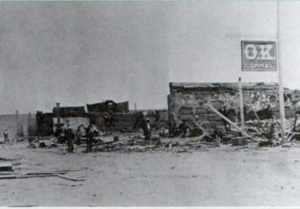 1929 would be right. I guess that the thing that seemed strange to me was the fact that when Wyatt Earp passed away, my own dad was five years old. Yes, he was an old man, and my dad a young boy, but for those five years, their life spans occupied the same space in history. And yet, my dad’s life had no connection to the time of Wyatt Earp, or to the man that he was.
1929 would be right. I guess that the thing that seemed strange to me was the fact that when Wyatt Earp passed away, my own dad was five years old. Yes, he was an old man, and my dad a young boy, but for those five years, their life spans occupied the same space in history. And yet, my dad’s life had no connection to the time of Wyatt Earp, or to the man that he was.
Wyatt Earp was a boy in search of adventure, and ran away from home twice after the Civil War broke out when he was 13. He went to join up with his two older brothers, Virgil and James. Each time he ran away, he was caught before he could reach the battlefield, and he was sent back home. Finally, at the age of 17, he left for good. His family had moved from the Illinois farm to California, but Wyatt wanted adventure, so he headed out to seek his own idea of life. He worked many different jobs, most notably as a lawman, and of course, a gambler. Life was not kind to Wyatt Earp. At a point when he was finally ready to settle down with the woman he loved, he married Urilla Sutherland, the daughter of the local hotel owner. The couple married about 1870, built a house in town, and were excitedly awaiting the birth of their first child. Then, life hit him with it’s most 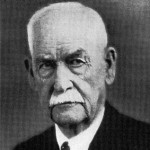 cruel blow. Within a year of their marriage Urilla contracted Typhus and died, along with their unborn child. Wyatt went off the deep end and became wild again. Eventually, he would be suspected of killing one of the suspects in his brother, Morgan’s death.
cruel blow. Within a year of their marriage Urilla contracted Typhus and died, along with their unborn child. Wyatt went off the deep end and became wild again. Eventually, he would be suspected of killing one of the suspects in his brother, Morgan’s death.
Unfortunately…or maybe fortunately, the west began to settle down. Wyatt was getting older. He settled in Los Angeles and hoped to have the Old West and his own legacy portrayed in film, but Hollywood wasn’t interested until after his death. I suppose it was then that Westerns moved into the forefront of television and movies. Westerns would then have a long run of popularity in the homes of many people…ours included.
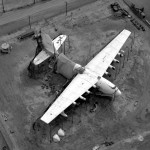 Since man first learned to fly, there have been many kinds of planes. It seems like everyone is trying to improve on them. Hollywood producer, Howard Hughes was one of the people who wanted to do something new with planes, so he founded Hughes Aircraft Company in 1932. He tested cutting-edged aircraft that he had designed and in 1937 broke the transcontinental flight-time record. He then broke the world record in 1938 by flying around the world in 19 hours and 14 minutes. Those were amazing feats, but it was another of his planes that caught my dad’s interest.
Since man first learned to fly, there have been many kinds of planes. It seems like everyone is trying to improve on them. Hollywood producer, Howard Hughes was one of the people who wanted to do something new with planes, so he founded Hughes Aircraft Company in 1932. He tested cutting-edged aircraft that he had designed and in 1937 broke the transcontinental flight-time record. He then broke the world record in 1938 by flying around the world in 19 hours and 14 minutes. Those were amazing feats, but it was another of his planes that caught my dad’s interest.
After the United States entered World War II, the government asked Hughes Aircraft Company to build a large flying boat capable of transporting men and materials very long distances. The concept had originally been that of Henry Kiser, but he dropped out and Howard Hughes took over. The plane was built mostly of birch, but also of spruce, due to wartime restrictions on the use of steel. The wood was laminated with plastic and covered in fabric. The design gave the plane a gray/white color, and since spruce was used in the design, the plane was dubbed the Spruce Goose. The plan was for it to be able to transport 700 men at a time. The plane had a wingspan of 320 feet and it was powered by eight propeller engines and was designed to take off and land on the water. It’s first and last flight was on November 2, 1947. It wasn’t originally intended to be a flight, but just a taxi trip on Long Beach Harbor. Howard Hughes decided on a whim to fly it. It flew 70 feet over the water for one mile before landing successfully.
Since me dad had built planes at Douglas Aircraft Company before going into the service during World War II, the Spruce Goose really intrigued him. It was such a novelty…whether it was supposed to be or not. When Mom and Dad were in McMinnville, Oregon, they finally had the opportunity to visit the Evergreen Aviation Museum 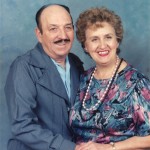 and see the Spruce Goose for themselves. I can just hear the thoughts going through my dad’s head the moment he saw it. I’ll bet it was all he could do, not to jump up and down with excitement. I’m sure it was an awesome moment.
and see the Spruce Goose for themselves. I can just hear the thoughts going through my dad’s head the moment he saw it. I’ll bet it was all he could do, not to jump up and down with excitement. I’m sure it was an awesome moment.
I don’t know if Dad ever saw the video of the first and only flight of the Spruce Goose or not, but I have had the chance to see it. It was amazing to see a plane with a wingspan that was longer than a football field actually be able to get in the air. To me though, it seemed like that flight took a lot of effort. I don’t think I would have wanted to trust it to fly the long distance flights to Europe and such. Still, it flew, and it is the largest plane, and no one can take those things away from the Spruce Goose.

